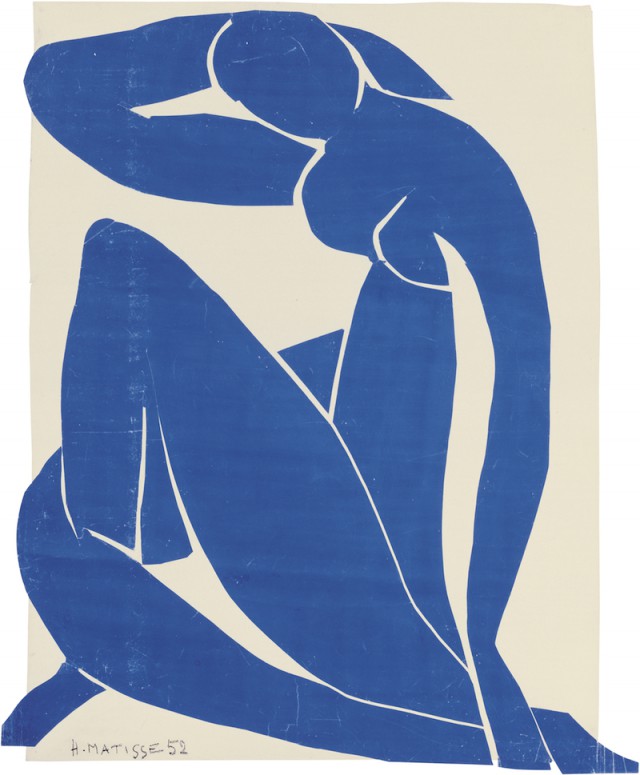Art & Exhibitions
Henri Matisse Was A Gender Outlaw
THE DAILY PIC: The great modernist’s cut-outs expressed a taboo girlishness.

THE DAILY PIC: The great modernist’s cut-outs expressed a taboo girlishness.

Blake Gopnik


Henri Matisse made this “cut-out”, titled Blue Nude II, in 1952, and of course it’s in the survey of his cut-paper work at the Museum of Modern Art in New York. The show is the subject of the latest Strictly Critical video that I’ve shot with my pal Christian Viveros-Fauné, and that went live on artnet News earlier this week. (Watch for Season Two of the series, debuting in January.)
We covered a fair amount of ground in our visit and in our vid, but there was one aspect of the work that I’ve since realized we missed: Matisse, the manly-man artist, in fact uses his cut-outs to explore a feminine side that was close to taboo in pre-Warhol modernism. His medium and tools–brightly colored paper and scissors–were more likely to be found in the playroom or sewing basket than in a “serious” studio.
What Matisse creates with them can be read as equally distaffian: twinkly and curly shapes that dance as decoration across walls and evoke such girly things as stars and hearts, fish, and birds. It was the kind of ornament favored in the kindergartens of the new schooling movements of the earlier 20th century, or in the best of modernist fabrics–often the purview of women whose achievements are only now beginning to register. Matisse, you could say, helped us get to the point where we could ungender the decorative.
That makes the actual “dresses” that Matisse based on his cut-outs seem the most radical works on display at MoMA, even if the fact that they were meant for male priests has helped camouflage their feminine swing.
(Musée national d’art moderne/Centre de création industrielle, Centre Georges Pompidou, Paris. Purchase, 1984; © 2014 Succession H. Matisse / Artists Rights Society (ARS), New York)
For a full survey of past Daily Pics visit blakegopnik.com/archive.